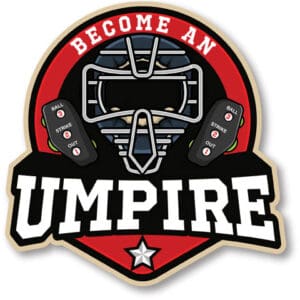Known as “The plate meeting, or Pre-game Plate Meeting” this happens before every game. It is an opportunity for the umpires to show their professional appearance and demeanor to take control and authority over the game before it even starts.
Umpires meet with the managers of both teams to exchange lineups and go over ground rules for the playing field on which the game will be played. The plate meeting should last only a couple of minutes.
Once on the Field
About 5 minutes before game time, all the umpires should enter the field and proceed directly to the home plate area. If the area is unavailable, for example, if a team is still taking infield, you should go to the dirt circle area around the plate or stand close to it, waiting for the team to finish its warmups.
Don’t spend a long time talking to one team or the other. If you know where the baseballs are for the game, it’s okay to go pick those up before you arrive at your place in the dirt circle.
As an Umpire, you should avoid congregating around a dugout as well as avoid prolonged conversations with coaches or players. It’s okay to say hello, but try to proceed straight to the plate.
At The Plate

Once the field is clear, proceed to the dirt circle area and take your
positions for the plate meeting. The plate umpire will take their position at the point of home plate facing towards centerfield. Base umpires will always stand on the opposite side of home plate, facing the plate umpire.
Before calling the managers to the plate for the meeting, it is best practice to make sure all players are in and remain in the dugouts or bullpens during the entire plate meeting. This is for the safety of everyone.
When conducting the plate meeting, all umpires should remove their sunglasses if wearing them; this shows respect to everyone so everyone can have eye contact.
Plate Meeting
Depending on the level of the game, the only people who attend the plate meeting are both managers, team captains, and, of course, the umpires. Team captains usually will only attend at the high school level and up.
Ask the manager if all players are legally and properly equipped according to the rules. The manager must give a verbal “YES”
The plate meeting should always start approximately five minutes before the scheduled start time. The home plate umpire will conduct the plate meeting.
At a plate meeting, I first introduce myself and my partners to both managers. As the introductions are being done, I mentally note both the manager’s first names.
Receiving The Lineup Card
I then ask the home team for its lineup card; once I have it, I write the manager’s name on top of it.
Always refer to the manager by their first name rather than “Coach .”It is more professional and shows a level of respect for them.
Next, I skim the home lineup card to see if any duplicate jersey numbers are listed. I also check to ensure that names are listed and the positions are correctly marked to know who is pitching and catching.
Depending on the level of baseball, the team may be using a Designated Hitter, a continuous batting order, or just batting straight nine players.
I like to confirm this to ensure we are all on the same page and note it on the lineup card.
After confirming that the lineup card is correct, I give a copy to the opposing manager.
I then ask the manager if all players are legally and properly equipped according to the rules and that all managers, coaches, and players will show good sportsmanship throughout the contest. A head shake is not an acceptable answer to this question; the manager must give a verbal “YES” to continue.
Once this is complete, I will do the same thing for the visiting team. Remember that the visiting manager needs a verbal “YES” when asked if all players are legally and properly equipped according to the rules and that all managers, coaches, and players will show good sportsmanship throughout the contest.
Ground Rules
Depending on the game’s level, I will have the home team manager cover the ground rules if the game is at the high school level or higher. If it’s a lower level, I may cover the ground rules. When covering ground rules at the plate meeting, you must be sure those rules are consistent with those in the rule book.
The proper way to go over ground rules is to start from behind the plate and go around the field. Jumping back and forth around the field to give ground rules can be confusing, and some ground rules may be missed.
Please make sure you confirm with the visiting manager that they don’t have any questions or concerns about these rules.
Plate Meeting Conclusion
I never ask the managers if there are any questions. This prolongs the meeting and turns it into a rules clinic. I will remind the managers that if they have a question about a call, they can always request time and come out to the umpire who made the call. I also reminded them we would only have conversations about those calls with the manager who attended the plate meeting.
At this point, I wish both teams good luck and shake hands with the managers, and we get ready to start the game.
This meeting should last 2-4 minutes at most. Be direct and to the point, and get the game started!
